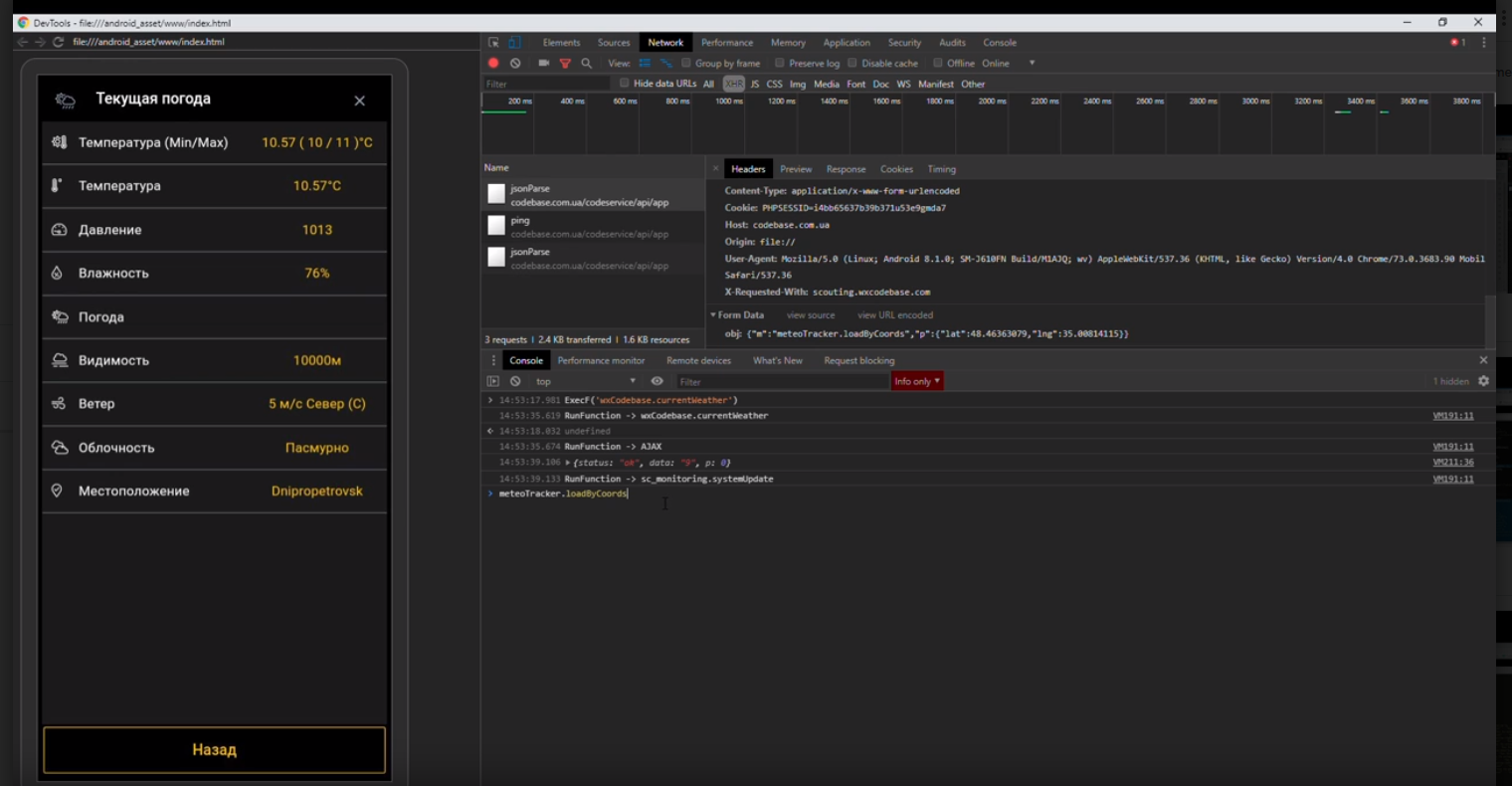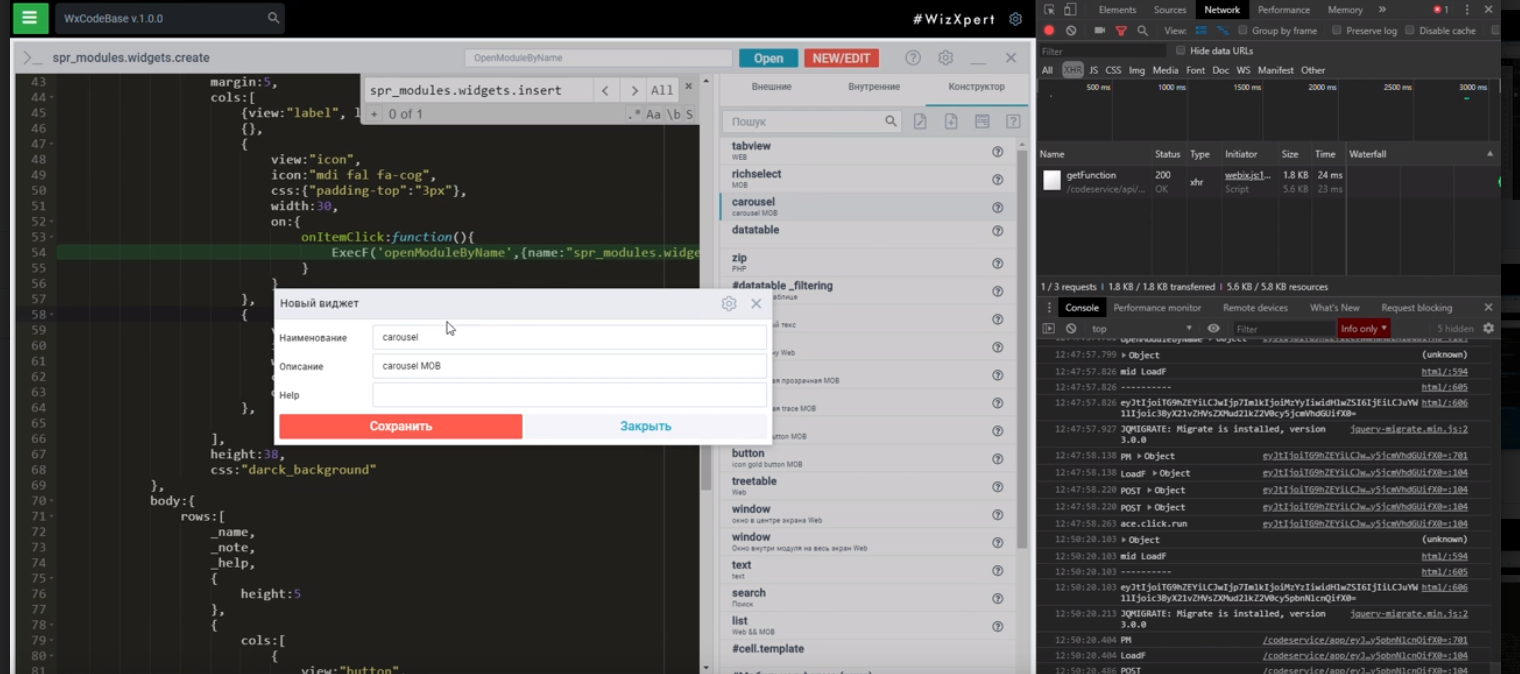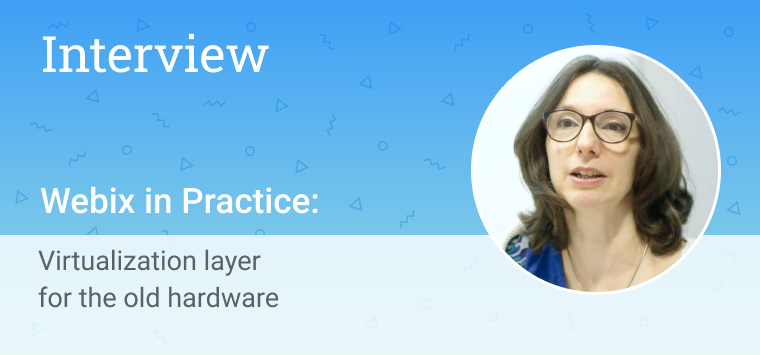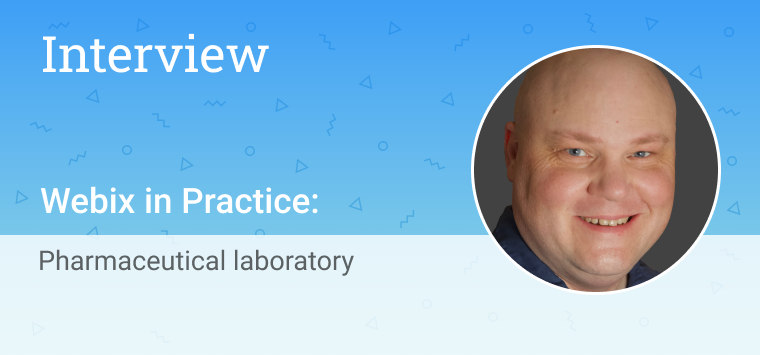We always feel happy when we learn how our UI library helps our customers translate their ideas into reality. Are you a Webix user? We would be glad to hear your story. Feel free to contact us with your showcases.
The opener of our new article series is an interview with one of the Webix users, a programmer Valeriy Kuznetsov. He develops digital solutions for both leading agricultural companies and small enterprises.
Webix allowed Valeriy to create an effective cloud tool for software development within a short time. The system is called WizXpert. This solution combines back-end, front-end, and hybrid mobile app development. The system’s interface is Webix-based.

— Hi, Valeriy. To start with, tell us a couple of words about yourself, your experience as a software developer.
— Programming is my calling. I created my first app using FoxPro in 1998. I was 19 years old then. It was an accounting system for a local supermarket.
After that, I started making solutions for the jewellery sector. I got a great project. The product was very popular among small businesses. This app is still in demand in Ukraine and Russia.
Later, I worked on CRM systems for wholesale and retail stores, garment factories.
In 2015, I went to Minsk to develop an estimate app, but in three months I had to go back home for personal reasons. Soon after that, I joined one of the leading agricultural companies in Ukraine.
— Tell us about your project. What is the essence of it?
— Actually, the essence of WizXpert concept is very close to that one of Webix — high development speed, modularity, ready-made design. I think I managed to create a state-of-the-art, well-designed and reliable product.
This tool incorporates a versions control module, an access and roles control system.
My system is very easy to handle even for a new team member. Everything is simple and intuitive. When you open a JavaScript module or select it from a project structure, you can see all its dependencies. A developer sees straight away all the dependent modules and can open them for editing.
WizXpert stores all standard Webix UI widgets for projects, empty forms of mobile and web apps, dynamic styles, and templates. A cross-cutting search engine allows finding information on all the modules regardless of their type.

— How did you learn about Webix?
— Somebody told me about you at the conference. It was 2013. You released a version 2.3 then.
— How was the idea born? Why did you decide to choose our library for your project?
— I faced a big challenge. I had to combine back-end and front-end development of both web and hybrid mobile apps. Functionalities were supposed to include generation of tasks for executors, threats detection; quality, deadline, and business-regulations control. The system also should have rendered all the data in a web app and synchronized with all the other solutions. The code was supposed to be documented as well.
I had 3 months for everything. The company’s management expected interim results from me in two months.
I had already had extensive experience in software development and had been exploring Webix for long. I also studied other similar solutions in the market then, but finally, I realized that I liked Webix most of all. I enjoyed the 6th version with the material design. It’s very beautiful and functional. I realized that I could do everything quickly without losing quality and visuality. This is how the idea of a cloud system which united three platforms was born. I used an open source version of Ace Editor as a source code editor. I also added identification of executable modules and highlighting of tables’ names from SQL queries in order to arrange dependencies.
I’m planning to create a capability to identify Webix components in the code for building a smart auto-complete and connecting CSS styles.
— Who else participated in the project?
— I did most of the work by myself, but I must admit that there are two more people who took part in the development. My wife Darja is a business analyst. She helped me to arrange a document and modules tree so that any person could effortlessly navigate the code. Our director Alexander Bondik also took part in the creation of the system.

— How long did it take to create a system?
— 2 months, but I’m still working on it, trying to make it even better. I add new features almost every day.
— Do you agree that Webix accelerates the development process considerably?
— You know, I looked through all the components and realized that your library is what I need. I 100% agree that Webix accelerates software development. I tell everybody about this. It’s pure gold. I also believe that everything should look decent. Your components have excellent design.
— What are our library’s strongest points in your opinion?
— It’s hassle-free, speedy and has no bugs. The navigation is great. It allows a programmer to develop a solution very quickly. And if you have a cloud system like mine at hand, everything happens almost instantly.
— Is Webix convenient for creating mobile apps?
— Yes, it is. My hybrid mobile app’s interface is Webix UI. After having worked with Webix for so long, I have only positive impressions. It’s not glitchy and is extremely easy to use. The documentation is very good as well. I simply take a component and implement it straight away.
As time was a crucial factor for me, I created a code editor from the Webix components. Later, I found an equivalent similar to iCloud 9.

On the right, I have a code editor. Documentation is automatically connected to the executed module.
In the end, documentation will have a tree-like structure similar to Сonfluencе. The system unites business documentation storage and development management. Customers will have access to documentation to see how modules work. It will help them understand the essence of a project.
— Have you ever faced any problems while using Webix?
— I’ve hardly had any. I noticed one small drawback though: several pages scroll in Carousel at a time when I’m trying to scroll only one. The rest is just fine: I create a window, put the components there and write code. It’s the best accounting system solution that anyone could have ever come up with. If you embed a visual code designer and CSS into it, the speed is likely to become even higher.
What allows us to increase speed? It’s performing fewer actions when we don’t have to spend a lot of time searching for something. When I’m working on a project, I always have a folder with code at hand. I look at the debugger console and see where the request goes, copy the part I need, paste it to the search box and find the required module. Even a specialist with little experience in software development can figure everything out very quickly. It’s very important to me personally, because I always have a lot of work to do and I should recollect very quickly where this or that piece of code is located.

Actually, it’s very easy to create apps with Webix. One day and the system is ready. Others spend years on such projects. I’ve done everything in a couple of months. Thanks to this, our company is ahead of its competitors now. The customer is proud of this project. Its interface, speed of work, absence of bugs — everything’s at a high level.
— Have you used any other libraries for your project?
— I had to utilize cartographic libraries. The solution I was working on, contained several modules for cartographic data management. For example, an agronomist comes to a field. He or she needs to find out the distance to the perimeter. This task has already been automated by somebody. That’s why I’ve turned to other libraries as well, e.g., Jquery. On the whole, the use of other libraries was minimal.
We are also planning to make schemes for code documentation. And we are thinking of employing a library that deals with vector graphics. You have a widget like this, but it doesn’t allow me to connect the blocks the way I’d like to.
— Did you use our default design?
— While creating the web app, I used default design with little changes. I only added some black color to the forms. I customized a mobile app design a lot because I needed a darker background there. Your default dark theme seemed a little incomplete to me, but a material one is very beautiful, and it was a perfect fit for my solution.
— Did Webix influence your train of thoughts or bring new ideas for your project implementation?
— The main thing is that Webix helped me bring my idea to fruition. The system that I created is unique. I must admit that the thinking process changes a little when you work with a UI library. I’d describe it this way: Webix is like a construction kit with many independent elements which I use for building a complete effective solution.
— Are you planning to apply Webix to your future projects?
— Sure! It seems very convenient to me. You know, the quicker we finish a project, the quicker we earn money. A project becomes less cost-effective when the team doesn’t manage to meet the deadline. That’s why we are interested in the speed of development so much, and Webix can significantly accelerate the process.
I’d like to add, the company I work for saved a fortune thanks to me and Webix. Rapid software development allowed us to release a solution for crops condition monitoring in 3 months. Real-time data provided by an app helps the company’s managers to make timely decisions. Such digital solutions ensure the effective work of the whole agricultural enterprise.



